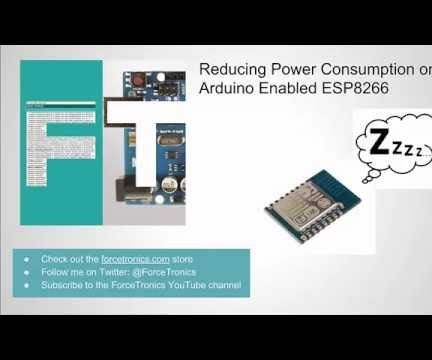
Best Way to Reduce Power Consumption in ESP8266
Reducing power consumption in ESP8266 devices is crucial for optimizing battery life and promoting energy efficiency. Whether you are designing a smart home system, IoT device, or any other project using ESP8266, implementing various power-saving techniques can greatly benefit your application. In this article, we will explore some of the best ways to reduce power consumption in ESP8266 modules.
1. Utilize Deep Sleep Mode
One of the most effective ways to minimize power consumption in ESP8266 is by utilizing deep sleep mode. When the device is in deep sleep, it consumes very minimal current, allowing the battery to last longer. By configuring the ESP8266 to enter deep sleep mode between tasks, you can significantly reduce power consumption.
2. Optimize Wi-Fi Usage
Wi-Fi is one of the biggest power consumers in ESP8266 devices. By optimizing Wi-Fi usage and reducing the frequency of data transmissions, you can lower power consumption. Consider using techniques like batching data, reducing connection intervals, and implementing sleep modes to make your Wi-Fi usage more efficient.
3. Use Low Power Libraries
There are various low power libraries available for ESP8266 that can help you reduce power consumption. These libraries provide functions and tools to optimize power usage in your application. By implementing these libraries and following their guidelines, you can achieve significant power savings in your ESP8266 projects.
4. Disable Unused Peripherals
Unused peripherals like GPIO pins, sensors, and LEDs consume power even when not in use. By disabling these unused peripherals when they are not needed, you can prevent unnecessary power drain. Make sure to properly configure and control all peripherals to ensure optimal power efficiency in your ESP8266 device.
5. Opt for Power-Efficient Components
Choosing power-efficient components for your ESP8266 projects can also help in reducing power consumption. Opt for components that have low power requirements and are designed for energy efficiency. From voltage regulators to sensors, selecting the right components can make a significant difference in the power consumption of your device.
6. Implement Duty Cycling
Duty cycling involves cycling between active and sleep modes at specific intervals to reduce power consumption. By implementing duty cycling in your ESP8266 application, you can ensure that the device is only active when necessary, thus conserving power. Fine-tune the duty cycling parameters to find the optimal balance between performance and power efficiency.
7. Monitor Power Consumption
Lastly, it is essential to monitor the power consumption of your ESP8266 device regularly. Use tools like multimeters, energy monitors, and power profiling software to analyze the power usage patterns of your device. By identifying power-hungry components and processes, you can make informed decisions to optimize power consumption effectively.
Reducing power consumption in ESP8266 devices requires a combination of hardware and software optimizations. By implementing the above techniques and continuously optimizing your design, you can achieve significant power savings and enhance the overall efficiency of your ESP8266 projects.
Was this helpful?
0 / 0